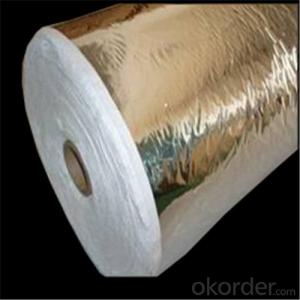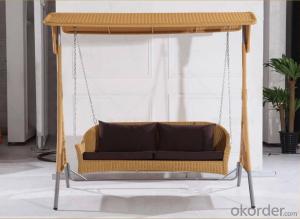Focus St Aluminum Skid Plate
Focus St Aluminum Skid Plate Related Searches
Led Light Bulbs For Ceiling Fixtures Led Lamps For Ceiling 42 In Ceiling Fan With Light Aluminum Coil Stock For Gutters Aluminum Foil For The Grill Hole Saw For Aluminum Plate Aluminum Tread Plate For Trailer Bow Plate For Aluminum Boat Aluminum Foil For Grow Room Aluminum Foil For Joint PainHot Searches
Stock Price For Aluminum Aluminum Coil Stock For Sale Aluminum Gutter Coil For Sale Used Aluminum Scaffolding For Sale 1/4 Aluminum Plate For Sale Aluminum Bar Stock For Sale Aluminum Round Stock For Sale Aluminum Diamond Plate For Sale Aluminum Scaffolding For Sale Craigslist 6061 Aluminum Plate For Sale Aluminum Dock Plate For Sale 7075 Aluminum Plate For Sale Aluminum Tread Plate For Sale Aluminum Checker Plate For Sale Aluminum Plate For Sale Near Me Plate Aluminum For Sale Aluminum Plate For Sale Aluminum Square Stock For Sale Aluminum Flat Stock For Sale Billet Aluminum Stock For SaleFocus St Aluminum Skid Plate Supplier & Manufacturer from China
Okorder.com is a professional Focus St Aluminum Skid Plate supplier & manufacturer, offers integrated one-stop services including real-time quoting and online cargo tracking. We are funded by CNBM Group, a Fortune 500 enterprise and the largest Focus St Aluminum Skid Plate firm in China.Hot Products
FAQ
- aluminum is used to make planes, cast iron is used to make heavy mashines. what is the comparisonof teh densities of aluminum and cast iron?
- The density of aluminum is MUCH lower than cast iron (thus, aluminum is LIGHTER). Because it is lighter, it would be much more ideal for applications like plane building, which is why aluminum is used over cast iron in airplanes. As well, aluminum has a protective coating called aluminum oxide which protects it from corroding in water. [Answer: see above]
- Aluminum sheets have a relatively high coefficient of thermal expansion, meaning they expand significantly when exposed to heat and contract when cooled. This is due to the nature of aluminum as a metal, which has a relatively low melting point and is known for its ability to conduct heat efficiently. When aluminum sheets are heated, the increased energy causes the metal atoms to vibrate and move more rapidly, resulting in expansion. Conversely, when aluminum sheets are cooled, the decrease in energy causes the metal atoms to slow down and move closer together, leading to contraction. It is important to consider the thermal expansion properties of aluminum sheets when using them in applications where temperature changes are expected, as this can affect the overall dimensions and performance of the material.
- Yes, aluminum sheets are highly suitable for manufacturing lightweight structures. Aluminum is known for its low density, making it one of the lightest metals available. This characteristic makes aluminum sheets an excellent choice for various applications where weight reduction is a priority, such as aerospace, automotive, and construction industries. Additionally, aluminum has a high strength-to-weight ratio, meaning it can withstand significant loads while still remaining lightweight. Furthermore, aluminum sheets offer excellent corrosion resistance, making them suitable for outdoor and marine applications. Overall, the combination of its lightness, strength, and durability makes aluminum sheets a preferred choice for manufacturing lightweight structures.
- Yes, aluminum sheets can be used for missile components. Aluminum is a commonly used material in aerospace applications due to its lightweight, high strength, and good corrosion resistance. It is often used for structural components and skin panels in missiles and other aerospace vehicles.
- I have a specific design I'd like to cut out of thin sheet metal (aluminum or tin) and I'm wondering how to make it more sturdy. The sheet metal is a bit flimsy. Can I strengthen it by heating it up (butane torch) and cooling it quickly?
- This Site Might Help You. RE: Can you temper aluminum or tin? I have a specific design I'd like to cut out of thin sheet metal (aluminum or tin) and I'm wondering how to make it more sturdy. The sheet metal is a bit flimsy. Can I strengthen it by heating it up (butane torch) and cooling it quickly?
- If something is wrong, what kind of glue can be used for bonding the stainless steel sheet and aluminum sheet? The area may be very big. What are some common or good glue to buy?
- Is the whole surface covered with glue or covered with four sides?What are you asking for?This kind of structure can use more glue,Acrylic structural adhesive, epoxy structural adhesive, silicone structural adhesiveNeed to understand glue, we can communicate,
- The bending radius of aluminum sheets is influenced by several factors, including the sheet thickness, the type of aluminum alloy used, and the bending method employed. In general, aluminum sheets with a thickness of 1mm or less can be bent without cracking if the radius is equal to the thickness of the sheet. For thicker aluminum sheets, it is necessary to have a bending radius that exceeds the thickness of the sheet in order to prevent cracking or fracturing. As a rule of thumb, aluminum sheets with a thickness ranging from 1mm to 6mm should have a bending radius at least 1.5 times the sheet thickness. For instance, a 3mm thick aluminum sheet should have a minimum bending radius of 4.5mm. It is important to note that these guidelines are approximate and can vary depending on the specific aluminum alloy and temper utilized. Additionally, different bending processes, such as air bending, bottoming, or coining, may require different bending radii. To obtain precise bending radius requirements for specific applications of aluminum sheets, it is advisable to consult the manufacturer's specifications or seek professional advice.














































